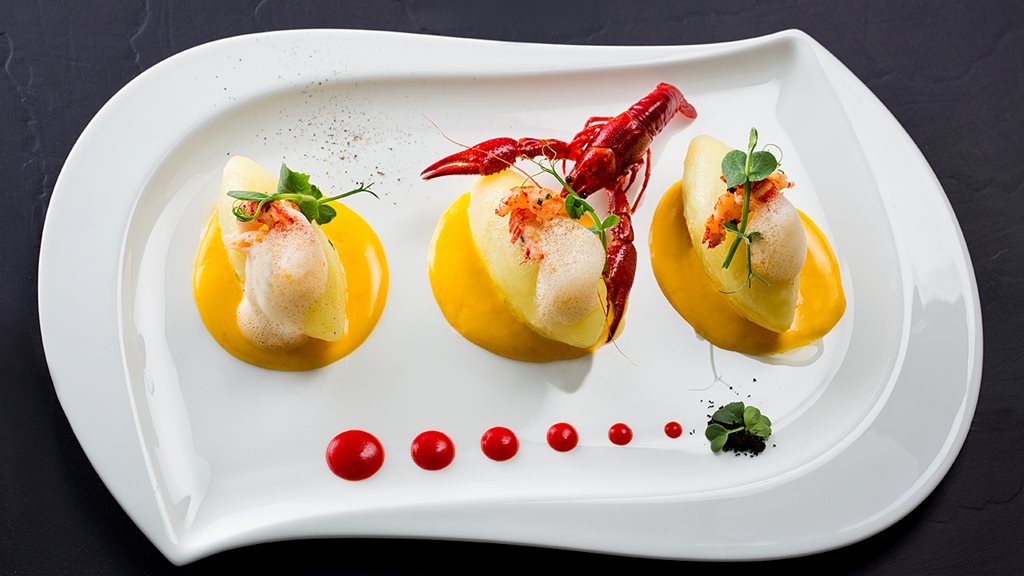If an anthropologist were to give an ethnographic name to modern-day Central Europe, it would most likely be “The Dumpling Area.” Dumplings here come in all shapes and sizes. Among the most notable are those in the form, though not necessarily the size, of the blimp-like zeppelins.
Cepelinai are the national dish of Lithuania and are usually eaten as a main course. The hearty dumplings are sometimes called didžkukuliai, which is how they were universally known before the invention of the zeppelin. In fact, they’ve been the perfect antidote to an empty stomach on a cold night for over 150 years.
Zeppelin with mushroom topping
These labor-intensive parcels are closer to kluski, Knödel, or nokedli than pierogi, which are more ravioliesque with stuffing enclosed in a thin sheet of dough. Rather cepelinai and their close cousins are formed more like jelly doughnuts, with a thick dough and filling deeper inside. A heavy sauce is a perfect complement to their robust construction.
The beauty of this beloved dish is that it gives cooks room to give it their own unique twist. Some like to play with the proportions of raw riced potato vs. cooked grated potato in the dough. Others put their own spin on the fillings, which typically include cheese curds, ground meat, or mushrooms. The sauce is the proverbial ‘cherry on top,’ with amateur and professional chefs alike using it to create a perfect balance to the filling and dough. Some simply serve sour cream along with their delicate cheese-filled dumplings, whereas a creamy bacon and mushroom sauce might be served alongside dumplings with a richer base.

Cepelinai, a reward for a hard day’s work
Originally created for famished laborers after a hard day’s work, the dish has been so embraced by Lithuanians of all classes and ranks that it can now be found on menus of every price point across the country. This is a fact driven home by the numerous blogs dedicated solely to where to find the best ones across the country.
For a truly gourmet experience, the restaurant in the Grand Hotel Kempinski Vilnius in Cathedral Square boasts a modern interpretation with “crayfish from the local river” and “served with a very light saffron sauce. The dish is garnished with sautéed crayfish tails, oven-roasted cherry tomatoes, and lime.”
While the dish does require a certain amount of dexterity in the kitchen, it could be worth the effort if a trip to Lithuania isn’t in the cards for the near future. But then again, that might be reason enough to book a ticket now.







